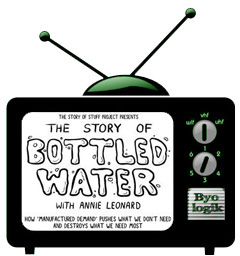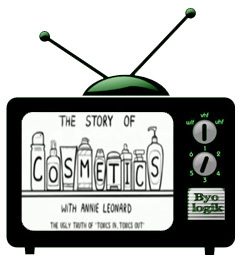 The Greenwashing is a communication strategy used to increase the sales of a product advertised as environmentally friendly even when it’s not environmentally friendly at all. Words like: “Organic, Natural, Eco-friendly” are distorted and used in a misleading way to give the product a low or no environmental impact. A total Brainwash…. The words eco today is used for everything, even the detergents are advertised as ecological and if you’re not sure how much use them do not worry, they just ivent the Eco-dose! To clean the house we need a specific product for each material and if you are thinking to clean the kitchen with the same detergent you use to clean the bathroom beware, your son could crawl on a stretch of neurotoxic substances. So we must buy different and specific detrgents.. One to clean the dishes, one for the bathroom, one for glasses, one for the silverware, one for furniture, one for the car, one for the body, one for hair etc… Beside these, there are the complementary: laundry softeners, limestone protectors, floor’s wax, deodorants, etc.. But why a detergent pollutes and how much a detergent pollutes?
The Greenwashing is a communication strategy used to increase the sales of a product advertised as environmentally friendly even when it’s not environmentally friendly at all. Words like: “Organic, Natural, Eco-friendly” are distorted and used in a misleading way to give the product a low or no environmental impact. A total Brainwash…. The words eco today is used for everything, even the detergents are advertised as ecological and if you’re not sure how much use them do not worry, they just ivent the Eco-dose! To clean the house we need a specific product for each material and if you are thinking to clean the kitchen with the same detergent you use to clean the bathroom beware, your son could crawl on a stretch of neurotoxic substances. So we must buy different and specific detrgents.. One to clean the dishes, one for the bathroom, one for glasses, one for the silverware, one for furniture, one for the car, one for the body, one for hair etc… Beside these, there are the complementary: laundry softeners, limestone protectors, floor’s wax, deodorants, etc.. But why a detergent pollutes and how much a detergent pollutes?
 The surface tension is a force produced by the cohesive forces of a body. This explains why water forms droplets on a glass surface instead of relax (wet). The Surfactants are substances with properties of foaming, wetting agents, detergents and water soluble. They are divided into 4 categories anionic, cationic, amphoteric and nonionic surfactants. These substances lower the surface tension of water making the water literally able to remove, wrap and take away the dirt. The only natural surfactants are the anionic carboxylates (soaps) all the others are produced using petroleum derivatives. The excessive presence of calcium and magnesium in the water “hardens the water” by lowering the power of surfactants that so, are mixed often with additional substances (highly polluting) as the “Phosphate” and “water’s softners” which make the action of surfactants more effective, or silicates to protect against corrosion. The surfactants can decay by aerobic way (with oxygen) such as when left in contact with air or by anaerobic way (without oxygen) such as in muddy seabed. There are products on the market that are advertised as 100% biodegradable. It must be said that the Regulation (EC) No 648/2004 of the European Parliament and the Council of 31 March 2004, introduces an interesting classification of biodegradability. There is the primary Biodegradability where microorganisms transform the surfactant, which loses its surfactant properties and Final biodegradability, where the surfactant is completely removed (mineralized) by the micro organism. According to the decision of the Board of 24 June 2011 establishing the ecological criteria for the award of the eco-label European Union (EU Eco-label) to hand dishwashing detergents: “Each surfactant used in the product shall be quickly biodegradable. The surfactants are considered quickly biodegradable if the level of biodegradability (mineralization) measured according to one of the five test methods used is at least 60% within 28 days. The surfactants non-biodegradable in anaerobic environment can be used in the product, provided they are not surfactant H400/R50 classification (highly toxic to aquatic organisms) and respecting the limit of 0.20 g for the recommended dose for one liter of water to wash the dishes and still the Final degradability under anaerobic conditions must be at least 60%. “
The surface tension is a force produced by the cohesive forces of a body. This explains why water forms droplets on a glass surface instead of relax (wet). The Surfactants are substances with properties of foaming, wetting agents, detergents and water soluble. They are divided into 4 categories anionic, cationic, amphoteric and nonionic surfactants. These substances lower the surface tension of water making the water literally able to remove, wrap and take away the dirt. The only natural surfactants are the anionic carboxylates (soaps) all the others are produced using petroleum derivatives. The excessive presence of calcium and magnesium in the water “hardens the water” by lowering the power of surfactants that so, are mixed often with additional substances (highly polluting) as the “Phosphate” and “water’s softners” which make the action of surfactants more effective, or silicates to protect against corrosion. The surfactants can decay by aerobic way (with oxygen) such as when left in contact with air or by anaerobic way (without oxygen) such as in muddy seabed. There are products on the market that are advertised as 100% biodegradable. It must be said that the Regulation (EC) No 648/2004 of the European Parliament and the Council of 31 March 2004, introduces an interesting classification of biodegradability. There is the primary Biodegradability where microorganisms transform the surfactant, which loses its surfactant properties and Final biodegradability, where the surfactant is completely removed (mineralized) by the micro organism. According to the decision of the Board of 24 June 2011 establishing the ecological criteria for the award of the eco-label European Union (EU Eco-label) to hand dishwashing detergents: “Each surfactant used in the product shall be quickly biodegradable. The surfactants are considered quickly biodegradable if the level of biodegradability (mineralization) measured according to one of the five test methods used is at least 60% within 28 days. The surfactants non-biodegradable in anaerobic environment can be used in the product, provided they are not surfactant H400/R50 classification (highly toxic to aquatic organisms) and respecting the limit of 0.20 g for the recommended dose for one liter of water to wash the dishes and still the Final degradability under anaerobic conditions must be at least 60%. “
In other words, it is not possible to know if a detergent is 100% biodegradable and we can only say that it is “easily, quickly or completely” biodegradable. In addition, the Commission requires a final biodegradability of 60% which means that 40% of surfactants used in detergents for dishes (which could be non-biodegradable in the anaerobic environment) can be accumulate in the riverbed and lakebed and disrupt the surrounding ecositema . So be aware and be very careful when it comes to choose a detergents that boast of being 100% biodegradable. The latest to come up in the packaging industry is the bio-plastics. A plastic that is derived from the use of natural substances such as cornstarch, potatoes or wheat. One more Green illusion. Apart from the fact that I think it’s a crime to let corporations to buy millions of hectares of agricultural land in poorer countries, removing them from the local community, to plant endless genetically modified corn fields to produce bio-diesel or bio-plastic which is then sold in rich countries. Definitely a step forward was taken by trying to reduce the use of traditional plastics, but this does not solve the problem that must be tackled at its root. Any product which is sold on a shelf in a supermarket has behind itself a very different story than the publicized ecological one. It starts from the extraction or cultivation of the materials needed to manufacture the product and its packaging and then it passes through the various stages of processing, using many machines that normally use fossil fuels to operate. Machinery that release gases and toxic liquids as wate products. Once packaged, the product begins its journey around the world carried by ships, planes and trucks for thousands of kilometers and then after a few minutes use it goes to it’s end in a incinerators that in Italy are often also called cancer exploiters.
 So if you think you’re doing a favor to your planet because you are using recycled paper napkins, cutlery, plates and glasses of Bio-plastic or a 100% biodegradable detergent, would be good to keep in mind that no matter how it is advertised, there are not disposable green products.
So if you think you’re doing a favor to your planet because you are using recycled paper napkins, cutlery, plates and glasses of Bio-plastic or a 100% biodegradable detergent, would be good to keep in mind that no matter how it is advertised, there are not disposable green products.
It is the disposable concept that is no-compatible with the environment.
If you really want to please the seals or the polar bears, glaciers and forests, yourself or your grandchildren… It’s time to turn off the television, begin to self-produce detergents and stop to BUY & CONSUME compulsively!





 In other words it means that the Earth needs a year and a half to regenerate renewable resources used by humanity in 2007 and to absorb all the CO2 produced. Humanity in 2007 used the equivalent of a planet and a half to support its activities. We consume too many resources. Our lifestyle is unsustainable. It is illogical to be based on infinite growth in a world with boundaries defined and finite. We need another type of development. We must change the way we think, eat, travel, warm, and it’s clear the relationship between our lifestyles and wars. The ecological footprint is expressed in hectares and according to
In other words it means that the Earth needs a year and a half to regenerate renewable resources used by humanity in 2007 and to absorb all the CO2 produced. Humanity in 2007 used the equivalent of a planet and a half to support its activities. We consume too many resources. Our lifestyle is unsustainable. It is illogical to be based on infinite growth in a world with boundaries defined and finite. We need another type of development. We must change the way we think, eat, travel, warm, and it’s clear the relationship between our lifestyles and wars. The ecological footprint is expressed in hectares and according to  The ecological footprint therefore, represents the “human need” compared to the biocapacity which is the “biological supply” of a region or the entire planet. When demand exceeds supply, decreases the biological capital on which depends the life of current and future generations. The data say that we consume about 50% more than the land we can use. In other words,it means that the biosphere takes about 18 months to replace those renewable resources that humanity consumes in one year. At this point the question is … Where do we take that 50% that we overconsume each year? simple,
The ecological footprint therefore, represents the “human need” compared to the biocapacity which is the “biological supply” of a region or the entire planet. When demand exceeds supply, decreases the biological capital on which depends the life of current and future generations. The data say that we consume about 50% more than the land we can use. In other words,it means that the biosphere takes about 18 months to replace those renewable resources that humanity consumes in one year. At this point the question is … Where do we take that 50% that we overconsume each year? simple,






